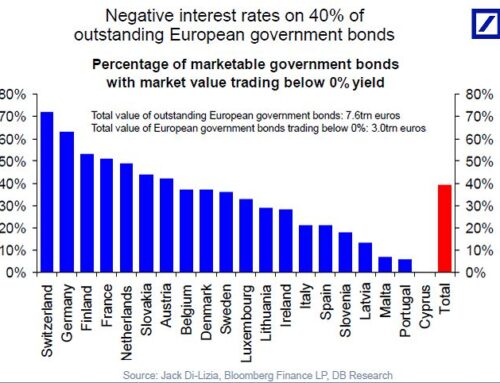‘A little knowledge is a dangerous thing’ and ‘a little learning is a dangerous thing’ said Alexander Pope.
I follow those phrases to the hilt. First, let me indicate the sectors in order of investing, investing based on certain reasons, and avoid investing completely.
Sectors where I Invest regularly:
- Banking & financials
- Pharma
- Information Technology
- Automotive
- Consumption
Sectors where I invest based on changing trends/seasonality/cycles:
- Metals
- Sugar
- Chemicals
- Fertilizers
- Agri related
- Aviation
Sectors where I avoid investing completely:
- Public Sector Banks/Companies
- Telecom
- Infrastructure
- Power including Renewable Energy
- Textiles
- Education
- Realty (exception: Godrej Properties)
- Capital Goods
- Insurance Cos
- Media & Entertainment
- Oil & Gas (exception: Reliance)
Now, to the part of why I avoid investing:
All the sectors mentioned above where I avoid investing hold certain reasons for me. It is not necessary for all the below rules to be applicable to all sectors, but are applicable to most sectors.
There are certain rules for my investment understanding/philosophy:
- Quality: is of utmost importance. In a bull market, quality is not given much preference, whereas in a bear market, people rush to quality. I don’t do that. I stick with 90% of stocks which have proven quality over long period of time. Infra, Power Realty, textiles fall in this category of poor quality. PSU’s can be included in this category due to poor corporate governance. Influence, bribery, corruption, manipulation of orders/tenders are common in these sectors – Too much opacity.
- Long gestation projects: really put me off. Roads/airports/ship building etc are long gestation projects with revenues spread over many years, with issues which can crop up any time. Also, the order book cannot be believed as projects can be cancelled if funding is not available or if cost of capital rises very fast. Having worked in large manufacturing companies / power companies, I have sufficient experience of what can go wrong in the project from the time of quoting the order till commissioning (18 mths for small captive power plants to years for large projects), handover & end of mandatory 1 yr post commissioning period.
- Capital Intensive Companies: really worry me. With capital requirements in thousands of crores, power, infra companies need to borrow heavily and balance sheet strength has turned poor for many companies since the global financial crisis. With interest rates rising, tariff’s being low, the profitability is very average to poor. The reason I worry is because the default of these Cos can affect banking sector. Textiles are a total no-no for me due to high debt. While sugar Cos have high debt, based on demand-supply cycles, short term opportunities open up from time to time. Telecom is another sector with pitiful returns.
- Regulatory interference: mostly in PSU’s as they are at the mercy of the incumbent govts, which decide on a whim certain guidelines, rules & regulations. Farm loan waivers are the biggest issue for PSB’s. A simple check of most PSU’s will show the poor returns and govt always squeezes them for hefty dividend payouts, which drains the cash out and leaves less room for organic/inorganic growth. A govt majority shareholding in a company is a total avoid for me.
- Understanding of revenues/business: I don’t understand the revenues of insurance, reinsurance companies as they are very opaque. This is one sector which I completely have been avoiding for a very long time and I don’t regret. However, I am making an attempt to learn the business working and hope to have a working knowledge at some point in time – to atleast understand the revenue sources/financials.
- Poor growth/financials: Growth prospects, fundamentals, supply-demand cycles are very important for the financial growth. Businesses which have operating profit margins <9% for consecutive 5 quarters are a no-no for me. If the Company cannot make even a 9% OPM’s, then how will the net profit sustain post depreciation, interest costs etc. Textiles, PSU’s, Infra/Power cos fall under this category. Price realizations are important – Telecom fares very poor in this category.
- Extremely low promoter pledged/ shareholding: causes certain operators to manipulate the stock as per their whims & fancies. Margin calls can be triggered in the case of serious market fall, resulting in the holding institution to sell off. This happens quite often, mostly in high beta, high debt, high interest cost, low OPM, companies.
Most of all, I try to understand the risks associated with companies – before deciding to invest or avoid. Need to evaluate the following risks:
Risk of a cyclical business, Customer concentration risk, Risk of concentration in one business segment, Competition risk, Project management risk, Risk related to safe operations, Risk of energy price fluctuation, Input price increase and supply chain management risk, Exchange fluctuations and interest rate risks.
I have explained the risks mentioned above in the Annual Report of Thermax Limited – pages 26/27, the link for which is available here:
I can confidently claim that I have written the first 27 pages & other sections of this annual report as well for other year’s annual reports.
The evidence for why I avoid investing in the above sectors? The last 14-year chart is sufficient enough to get a decent bit of understanding. Negative returns in 14 years from: Realty, Power; Poor returns from Infrastructure, manufacturing, metals.
Main points of note:
- Return ON Capital – in a bull market; accumulate good qty regularly.
- Return OF Capital – in a bear market; Stop loss targets mandatory.
- Understanding of Risk is more important than the understanding of Reward.
- Quality, Corp. governance, growth prospects, financial strength – Key Levers.
- Capital intensive, heavily regulated, poor demand cycles – Be aware always!
- Most importantly, understand the business of the company always. It helps in staying strong during tough times & in market corrections.
Hope I have been able to address the query to your satisfaction. This is my understanding, with the limited knowledge that I have and I might be wrong too. But the long-term returns prove that I might be not way off.
Graph credits: FYERS & Trading View sites.





